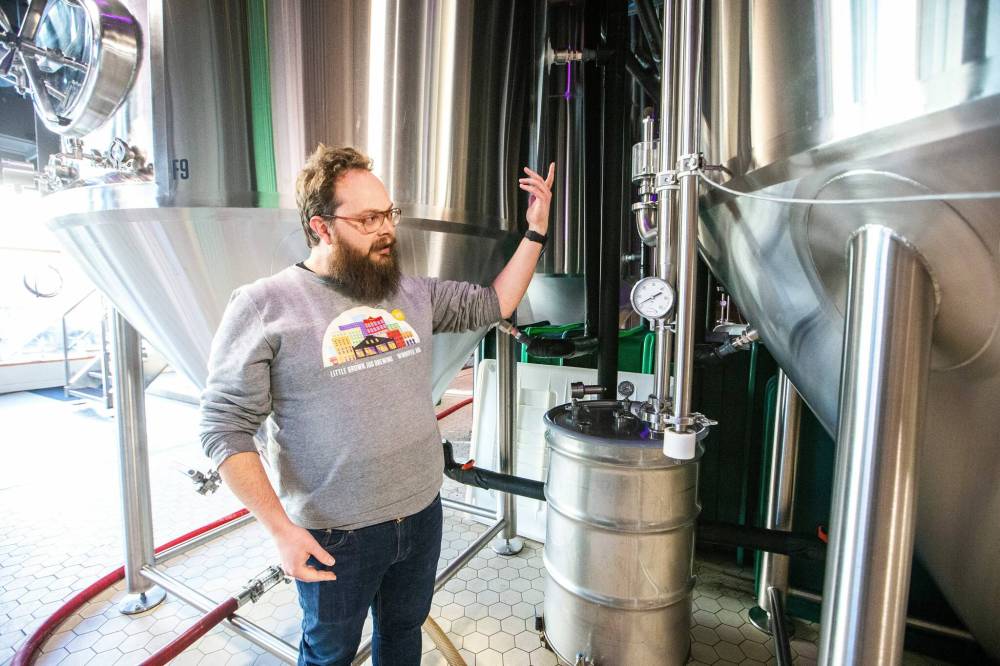Little Brown Jug brews up carbon-capture technology
Advertisement
Read this article for free:
or
Already have an account? Log in here »
To continue reading, please subscribe:
Monthly Digital Subscription
$0 for the first 4 weeks*
- Enjoy unlimited reading on winnipegfreepress.com
- Read the E-Edition, our digital replica newspaper
- Access News Break, our award-winning app
- Play interactive puzzles
*No charge for 4 weeks then price increases to the regular rate of $19.00 plus GST every four weeks. Offer available to new and qualified returning subscribers only. Cancel any time.
Monthly Digital Subscription
$4.75/week*
- Enjoy unlimited reading on winnipegfreepress.com
- Read the E-Edition, our digital replica newspaper
- Access News Break, our award-winning app
- Play interactive puzzles
*Billed as $19 plus GST every four weeks. Cancel any time.
To continue reading, please subscribe:
Add Free Press access to your Brandon Sun subscription for only an additional
$1 for the first 4 weeks*
*Your next subscription payment will increase by $1.00 and you will be charged $16.99 plus GST for four weeks. After four weeks, your payment will increase to $23.99 plus GST every four weeks.
Read unlimited articles for free today:
or
Already have an account? Log in here »
Hey there, time traveller!
This article was published 25/11/2023 (738 days ago), so information in it may no longer be current.
LITTLE Brown Jug has become part of the first handful of breweries in the country to install carbon-capture technology.
While beer brewing may not be the biggest carbon emitters in the world, the process does off-gas carbon dioxide (CO2) during certain parts of the fermentation process.
But the magic of a brewery making such an investment in capturing the CO2 that’s off-gassed in its operations, is that it can turn around and reuse it.

MIKAELA MACKENZIE / WINNIPEG FREE PRESS
Head of brewery operations, Rob McWhinney, shows a component of the new CiCi Carbon Recapture System in the fermentation vat area at the Little Brown Jug brewery on Tuesday.
Not only is CO2 used to carbonate the beer, it’s also used to purge oxygen during various stages of the production process.
Rob McWhinney, head of brewery operations at LBJ, said CO2 is used to push oxygen away from the beer.
“Once beer starts to ferment its biggest enemy is oxygen,” he said. “It reacts with components of beer and releases staling compounds. As soon as you get oxygen in contact with the beer the shelf life goes way down.”
With the help of a $150,000 grant from the province, Little Brown Jug acquired the technology from a company in Austin, Texas, called Earthly Labs.
From a unit the size of a squat refrigerator that compresses and stores the fermentation gasses from beer production, McWhinney figures Little Brown Jug will eventually be able to capture and re-use between 20 and 33 per cent of the carbon dioxide it currently buys from a supplier out of Brandon.
It has only been operational for a few weeks, so McWhinney said with a little more conservation effort they should be able to get even more efficient.
But while the idea of carbon capture is typically associated with lowering the carbon footprint, in the beer business it is also about productivity and cutting costs.
“It is pretty exciting,” said McWhinney. “It’s nice from a sustainability perspective because we are generating CO2. But we also have to use a lot. To be able to utilize what we’re generating in-house in house is a really big thing.”
Having its own source of CO2 — an essential input in the production process — also reduces the risk of any disruptions in supply that could occur especially considering there are not many sources for food-grade CO2 in the province.
Among other things, in the brewing and canning process CO2 is used to flush out any oxygen in the fermenters before the process begins and then again on the canning line. Every can gets a shot — again to purge oxygen — before the beer is injected and the can sealed.
McWhinney said the way it uses CO2 means it has to be flavourless. He’s still fine-tuning the process so that if its captured CO2 is used to flush out cans for its Generic! lager, for example, that it doesn’t end up tasting like 1919, its signature Belgian pale ale.
“The one limitation right now is that most of our CO2 is generated by 1919 production,” said McWhinney.
“Belgian beer uses Belgian yeast, and it kicks off a lot more flavour compounds than, for instance, a clean American ale. If you take the CO2 off that and bubble it though water to get minimally carbonated water, you can taste the difference in that water.”
McWhinney looks forward to sharing his best practices with others in the industry.
He said Little Brown Jug went through some regulatory hurdles to get the equipment into the country but that should be easier for those to come after them.
martin.cash@freepress.mb.ca

